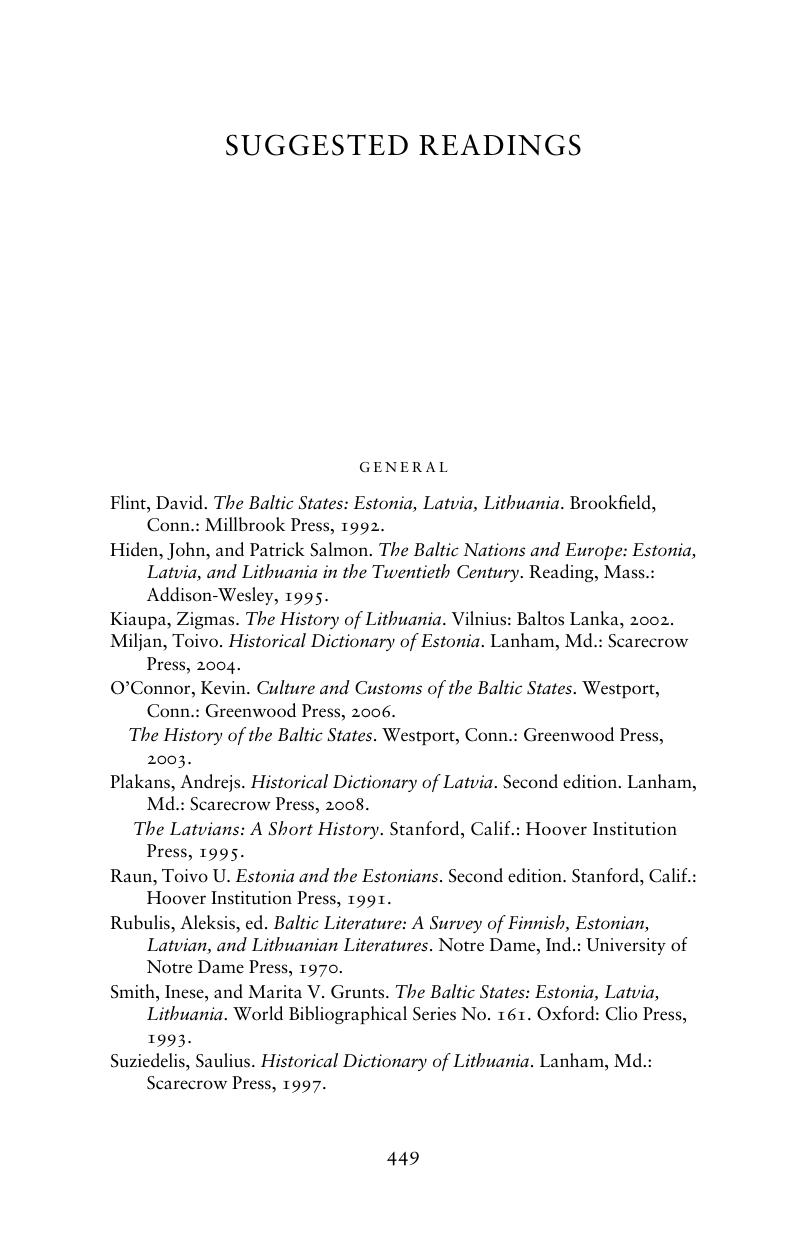Book contents
- Frontmatter
- Contents
- List of plates
- List of maps
- Preface
- 1 The peoples of the eastern Baltic littoral
- 2 The new order, 1200–1500
- 3 The new order reconfigured, 1500–1710
- 4 Installing hegemony: the littoral and tsarist Russia, 1710–1800
- 5 Reforming and controlling the Baltic littoral, 1800–1855
- 6 Five decades of transformations, 1855–1905
- 7 Statehood in troubled times, 1905–1940
- 8 The return of empires, 1940–1991
- 9 Reentering Europe, 1991–
- Suggested readings
- Index
- CAMBRIDGE CONCISE HISTORIES
- References
Suggested readings
Published online by Cambridge University Press: 05 June 2014
- Frontmatter
- Contents
- List of plates
- List of maps
- Preface
- 1 The peoples of the eastern Baltic littoral
- 2 The new order, 1200–1500
- 3 The new order reconfigured, 1500–1710
- 4 Installing hegemony: the littoral and tsarist Russia, 1710–1800
- 5 Reforming and controlling the Baltic littoral, 1800–1855
- 6 Five decades of transformations, 1855–1905
- 7 Statehood in troubled times, 1905–1940
- 8 The return of empires, 1940–1991
- 9 Reentering Europe, 1991–
- Suggested readings
- Index
- CAMBRIDGE CONCISE HISTORIES
- References
Summary

- Type
- Chapter
- Information
- A Concise History of the Baltic States , pp. 449 - 457Publisher: Cambridge University PressPrint publication year: 2011

